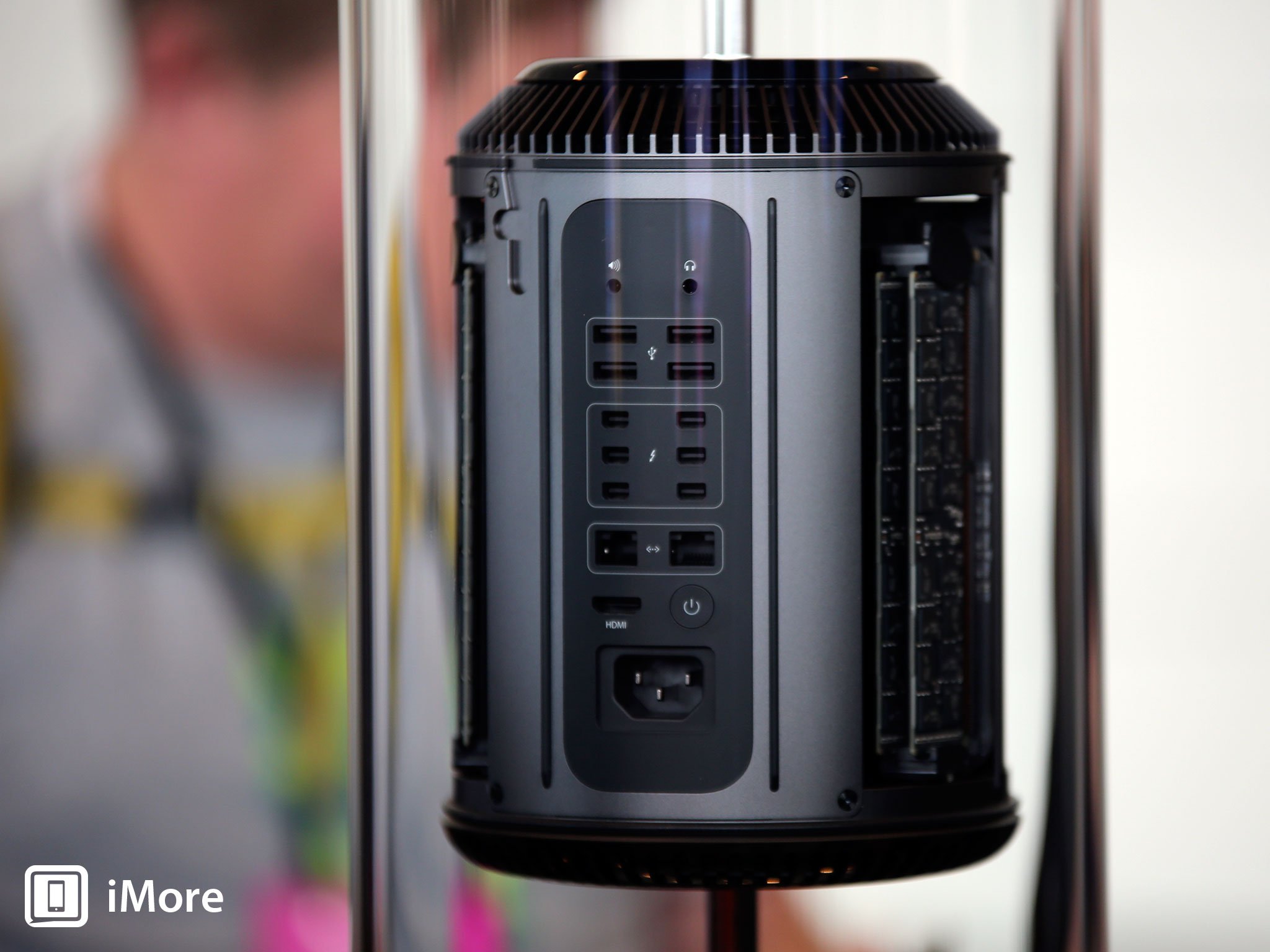The new Mac Pro: purpose-built for performance

The most frequently repeated joke at WWDC about the new Mac Pro is that it looks like a trashcan or a cigarette tray. There's nothing trashy about it: it looks more like a jet turbine - an example of form following function so evident throughout Jony Ive's design catalog.
Built for speed
Just about every aspect of the Mac Pro's performance is cued to reducing bottlenecks whenever possible. Internal storage via hard disk is gone and replaced with flash memory. Flash memory connected through PCI Express (PCIe). This isn't an SSD bottlenecked by SATA - you have the much heartier bandwidth of PCIe to work with - it's 2.5 times the speed of the fastest SSDs on the market.
Thunderbolt 2 is another practical example. Each of the six Thunderbolt ports on the Mac Pro has full bandwidth - 20 gigabits per second. That's why you can have three 4K displays running simultaneously with three more dedicated to RAID storage, storage area networks or whatever else you might need, daisy chainable on other ports.
Then there are the two workstation-class graphics processors built in to the system, to help drive pixels to the displays - up to three of them operating at 4K resolution. Unimpressed, gamers? I expect you are, because these aren't for you. AMD's FirePro processors are optimized for massively parallel operations - a boon to 3D designers, render farms and other businesses.
The four memory sockets are occupied by 1866MHz DDR3, Error Correcting Code (ECC) memory. With up to 60 gigabytes per second memory bandwidth. That's twice as fast as the current-gen Mac Pro. Apple's keeping mum about specific processor configurations for now, but has said that 12 core systems will be an option.
Four USB 3.0 ports encourage universal connectivity with commodity peripherals that aren't Thunderbolt-specific.
iMore offers spot-on advice and guidance from our team of experts, with decades of Apple device experience to lean on. Learn more with iMore!
And all of this horsepower is designed in a compact device that's not even a foot tall. Built around a common thermal core, the Mac Pro's heat radiates inward and rises like a chimney. Mac veterans wince a little recalling the convection cooling of the Power Mac G4 Cube, but even the fan has been engineered for performance: the blades are curved backwards, to run slower with more efficient heat removal. That also means quieter fan operations.
From the top to the bottom, the Mac Pro is thoroughly optimized for maximum performance. Going into it, many feared that the Mac Pro was headed for oblivion. But based on what we're seeing, Apple is simply reinventing the category.
Is the Mac Pro the new iPad?
No, the Mac Pro is not going to sell as many units as the iPad. But the tablet market existed before the iPad, and it took the iPad to disrupt tablets enough into a real business. In that respect, the Mac Pro has the same potential impact where servers and high-powered workstations are the dominant market.

